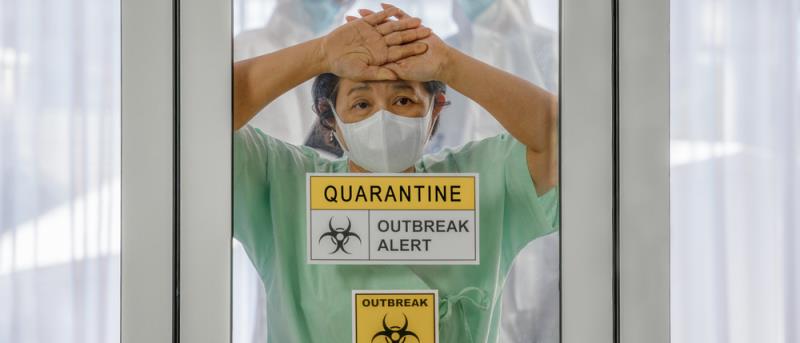COVID-19 restrictions also suppress other respiratory viruses





Public health measures to stop the spread of the coronavirus disease 2019 (COVID-19) may have the unintended benefit of also reducing hospitalizations due to other viral respiratory infections, according to a new study.
“During the COVID-19 pandemic, Singapore implemented various measures to mitigate the transmission of COVID-19. These included border controls, social distancing, community education, a lockdown, and compulsory wearing of masks in public,” the researchers said. “We report that public health measures were not only able to reduce COVID-19 transmission but also [that] of endemic community respiratory viral infections.”
From epidemiological week (EW) 1 of 2017 to EW 52 of 2019, the mean weekly positivity rate of noninfluenza respiratory viruses was 16.2 percent. In EW 7 to 14 of 2020, when public health measures against COVID-19 had already been deployed, this figure was almost halved, bringing it down to 8.2 percent. The difference was statistically significant (p<0.001). [J Hosp Infect 2020;doi:10.1016/j.jhin.2020.07.023]
Moreover, by EW 15 to 27 of 2020, the mean weekly positivity rate had further dropped by 80 percent relative to prior years (3.2 percent; p<0.001).
Similarly, researchers observed a significant impact of public health measures on influenza cases. The mean weekly positivity rate during EW 7 to 14 in 2020 was reduced by 75–80 percent. For instance, the rate during the same period in 2017 was 8.4 percent, as opposed to only 1.4 percent in 2020 (p<0.001).
In 2018, the mean weekly positivity rate was 8.1 percent, while in 2019, this value was 5.6 percent. These rates were both significantly higher than the 2020 figure (p<0.001).
The researchers also observed a sharp drop in influenza hospitalizations as compared with the previous years’ seasons. The 2020 rate of admission was 0.6 percent, as opposed to 18.6 percent in 2017, 7.5 percent in 2018, and 8.1 percent in 2019 (p<0.001). In turn, admission to the intensive care unit due to respiratory viruses also decreased.
“In Singapore, the combination of public health measures effectively reduced community respiratory virus admissions,” the researchers said. “Our findings suggest that measures such as social distancing and public hygiene are indeed effective in reducing respiratory viral transmission, as demonstrated by the drop in cases after EW 7.”
“The lockdown helped to further halt transmission and reduce hospital admissions, though a measure not feasible in the long run,” they added.
However, the data presented are underpowered to accurately determine the efficacy of each individual public health measure employed, as the contributions of each could have additively led to the reduction in respiratory infections.
“As Singapore continues to re-open, allowing bigger social gatherings, future studies will potentially be able to evaluate the true effectiveness of wearing face masks as this measure is likely to continue,” the researchers said.